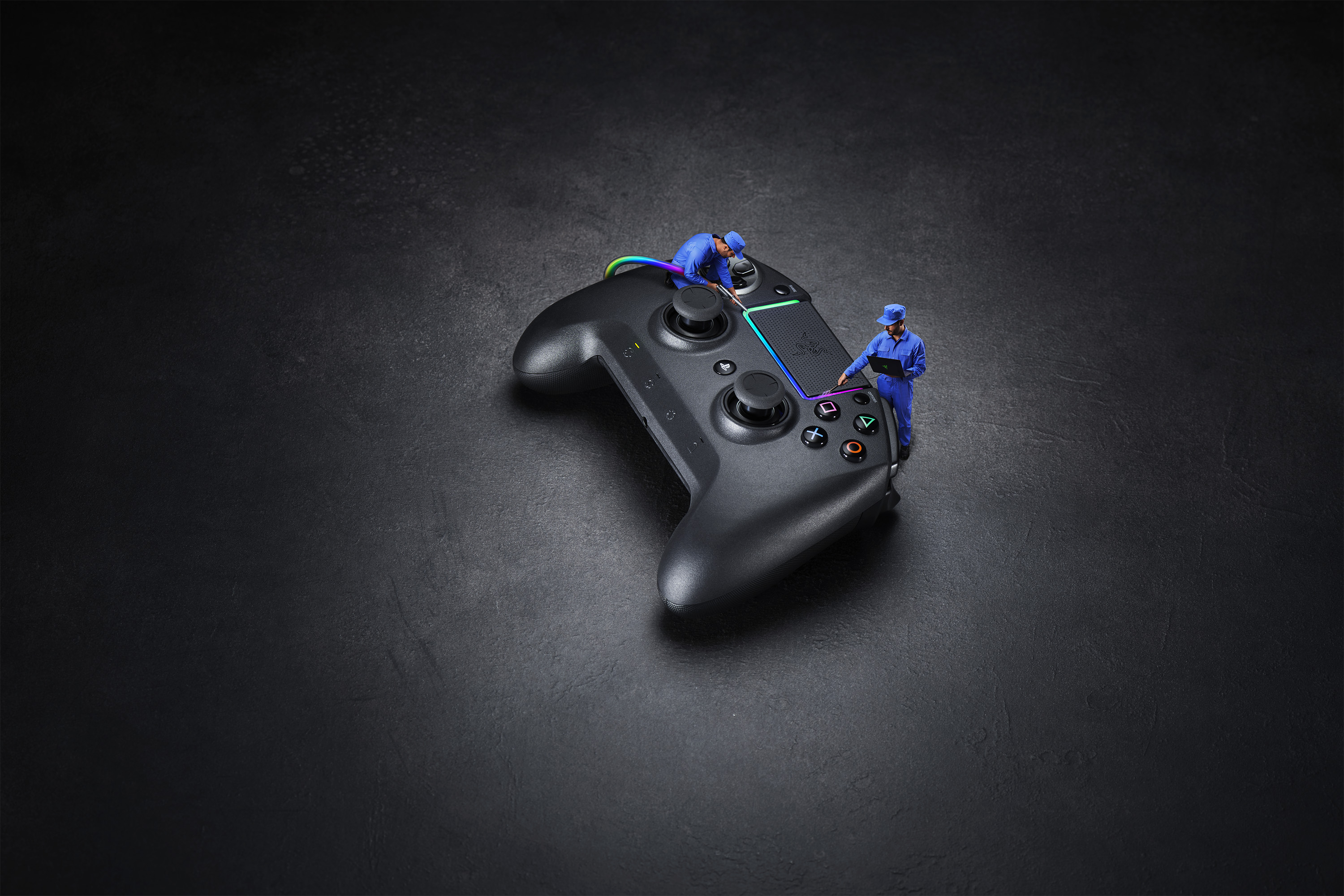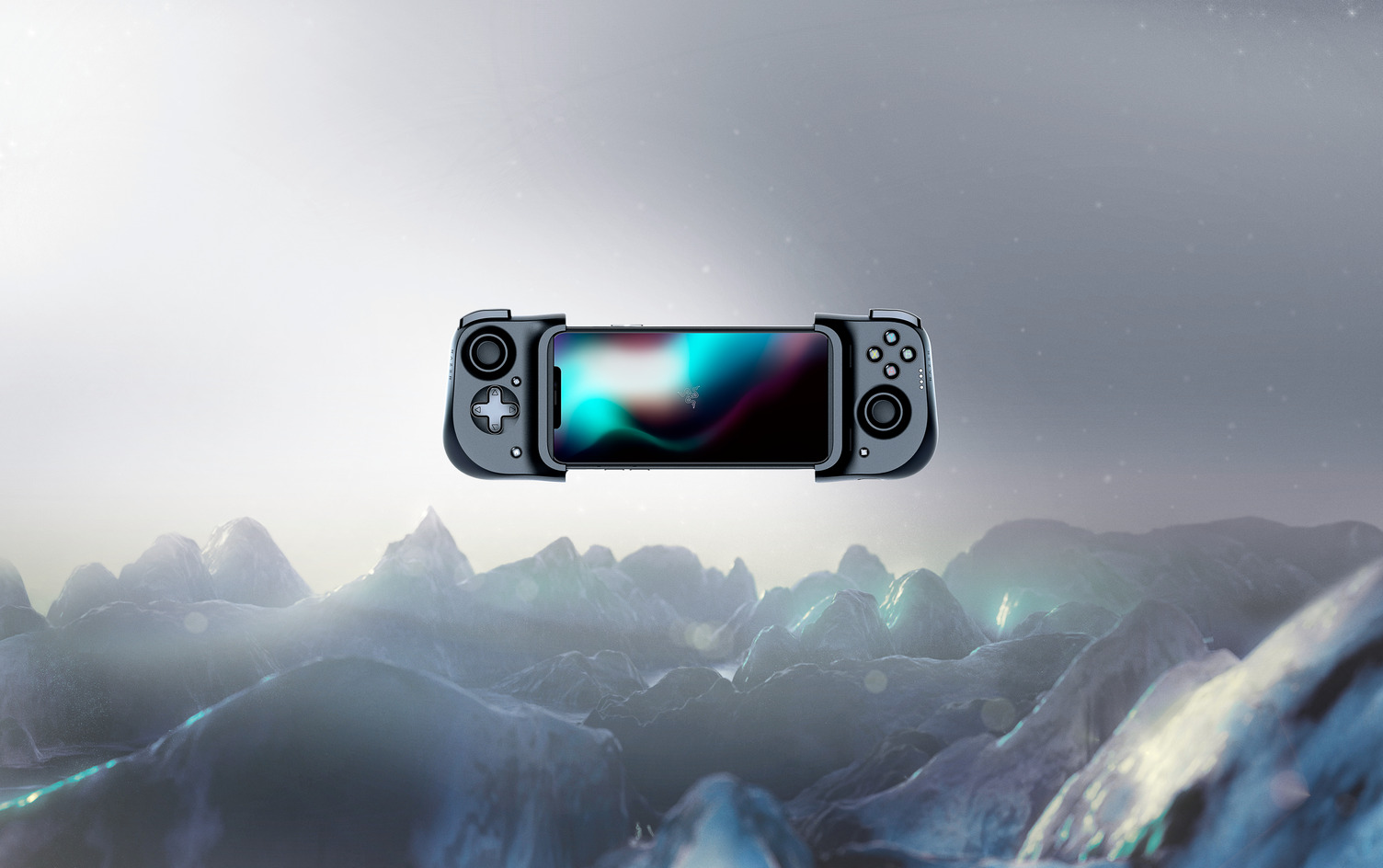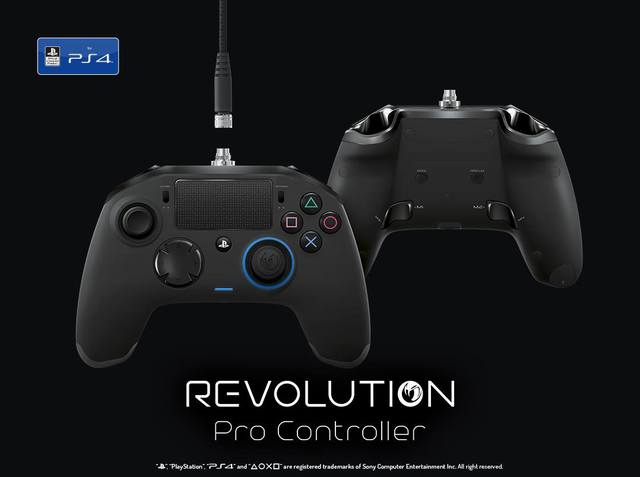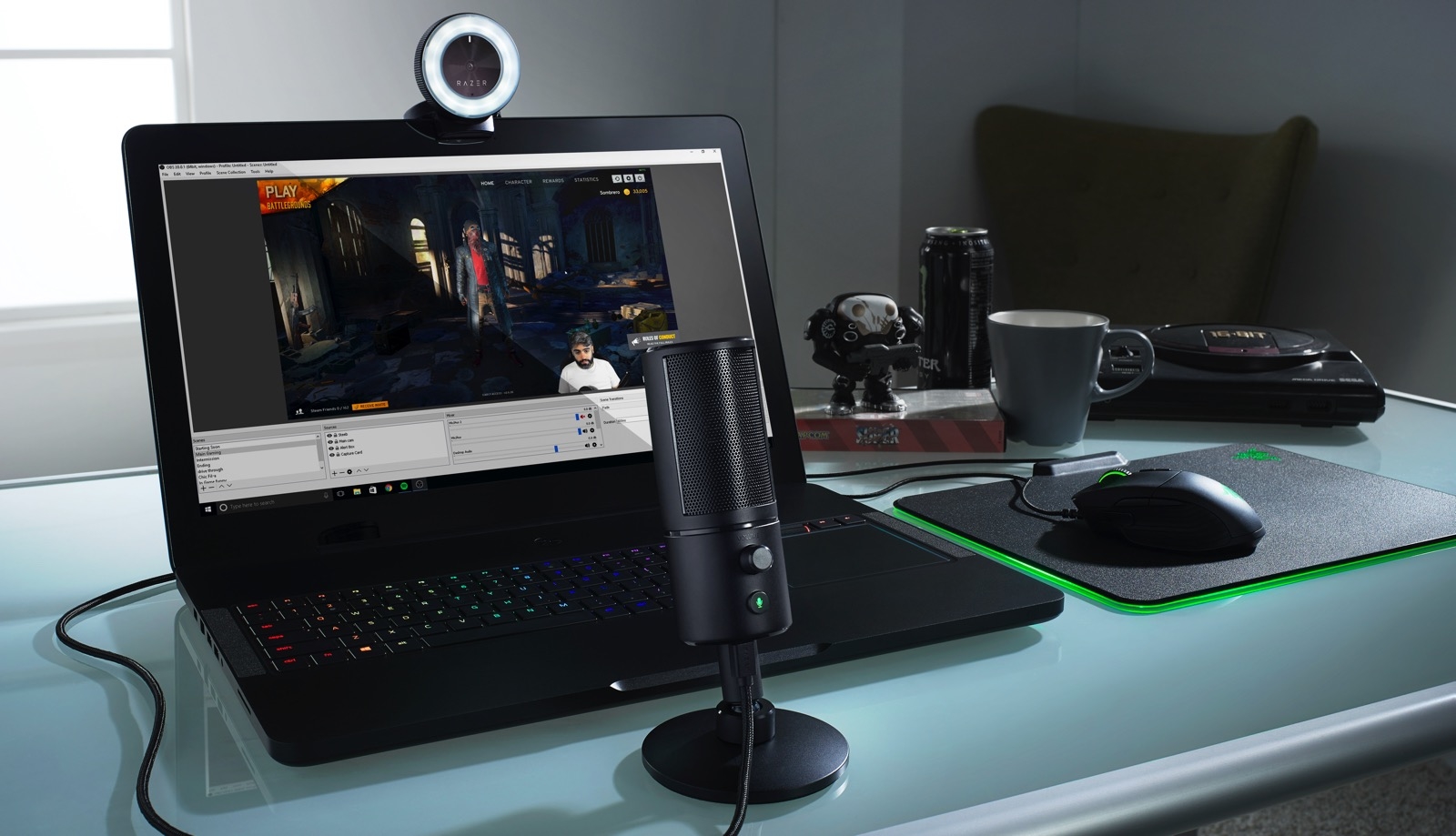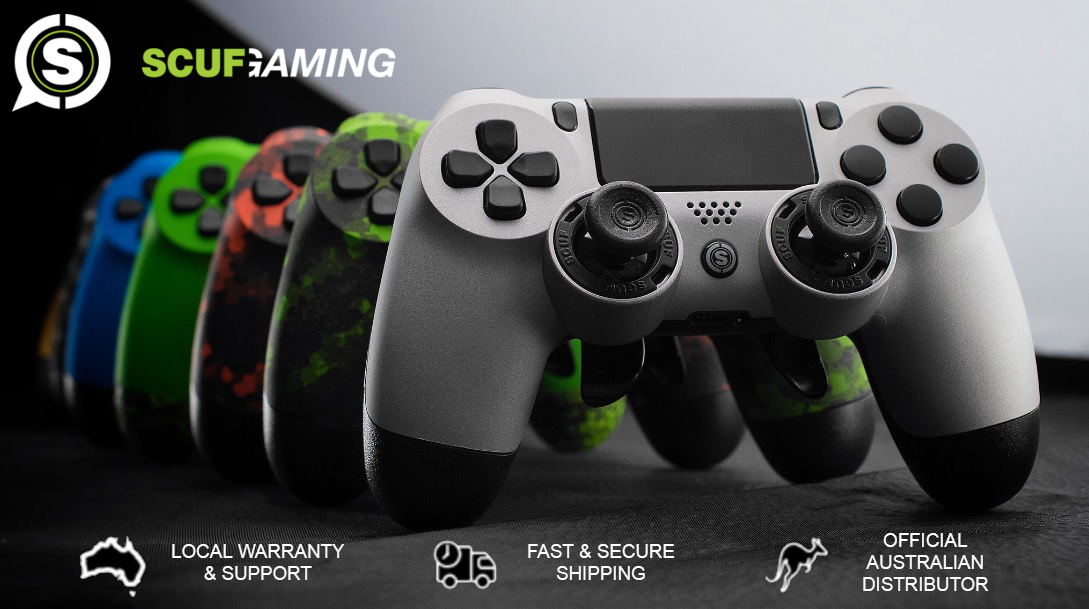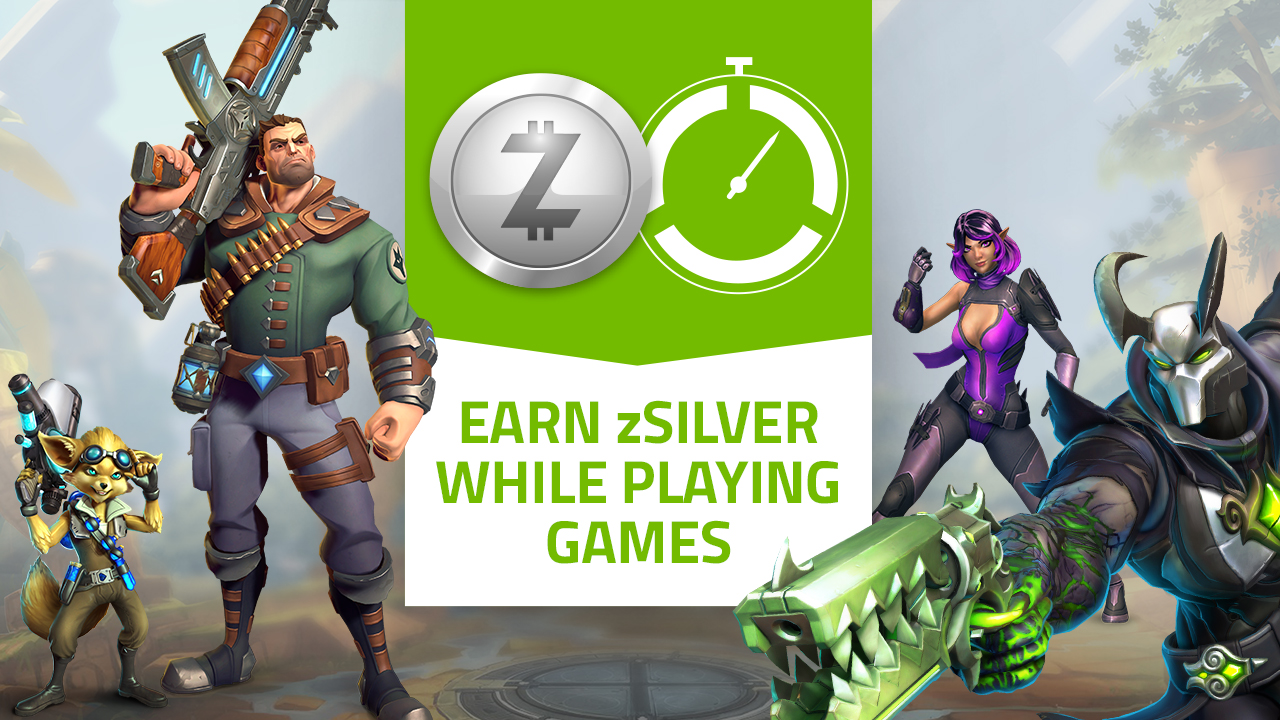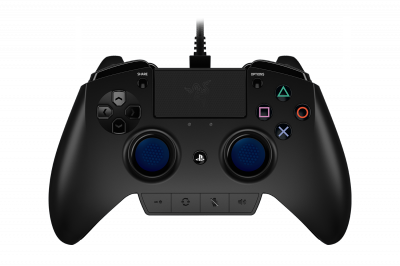
For years, the only way you could get a customisable controller for your console was to go through third party companies like Scuf Gaming. With the announcement, release and subsequent success of the Xbox One Elite Controller it was only a matter of time before Sony followed suit and released premium customisable controllers for the PlayStation 4. Their eventual approach is different than Microsoft’s, instead licensing Nacon and Razer to create third party elite controllers for the PlayStation 4. I already went hands-on with the Nacon Revolution Pro and have now had some substantial hands-on time with the Razer Raiju as well. While the Raiju improves on a couple of features of the Revolution Pro, it introduces new annoyances that drag the entire controller down.
Unlike the Revolution Pro, Razer stayed true to a number of Sony’s general design philosophies when designing the Raiju. The analog sticks are laid out symmetrically, staying with the layout that is now a signature of controllers, the d-pad is gated and the face buttons are solid black plastic with the symbols baked in. This is where the similarities end, with the remainder of the Raiju’s design moving away from the standard Dualshock 4 design. The analog sticks are topped with blue dimpled rubber coverings which grip onto your thumbs, and the backs of the hand grips are ergonomically designed to fit into your hands more comfortably and are also covered in a textured grippy blue rubber. The controller feels great in your hands, with the ergonomic grips making this one of the most comfortable controllers I’ve ever used.
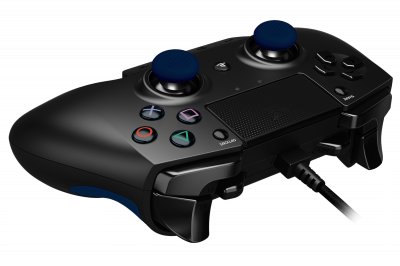
Beyond the standard buttons that you find in every controller, the Razer Raiju comes with 8 additional buttons to cover all of your gaming needs. On the bottom of the controller you have buttons that control your headset, with the option to mute and adjust volume in easy reach. You also have two buttons which allow you to access and swap between custom profiles for the controller. Additionally, you have four customisable buttons, two of these in between L1 and R1 and two on the back of the controller next to the hand grips. The buttons are wonderfully clicky, but their placement and shallow nature leads to issues during gameplay. The placement of the top buttons can easily lead to you accidentally hitting any of the shoulder buttons and triggers, especially if you have the hairline triggers enabled. The back buttons are in a similar situation, where their shallow nature means that you will sometimes hit them without meaning to. This caused some frustration when attempting to use them, especially during particularly tense moments in games, which led to me largely ignoring them. This could have been avoided with some better button placement for the top buttons and a heavier press being required on the back ones.
In general, the controller feels oddly disjointed, with buttons all feeling and operating completely differently from each other. While the d-pad and face buttons in a controller don’t always feel identical there’s generally some level of cohesion in the buttons used and how they feel when pressed. In the Raiju, the face buttons are amazing, with an extremely satisfying click to them. They’re similar to the fantastic buttons found on the PlayStation Vita, except they have an even shallower button press allowing for instant feedback when pressed. Conversely, the d-pad feels terrible in use. When I began pressing the d-pad, which is actually four completely separate directional buttons and not a d-pad at all, my first thought was that the buttons were incredibly mushy. After a little while, I realised that the buttons were the opposite of mushy, they’re actually extremely stiff and require quite a bit of force to push in. The force required to push the buttons makes them feel unwieldy and unresponsive and means that any situation requiring rapid button presses of the d-pad are an exercise of frustration. Their separate nature also means that any game where you prefer to use a d-pad for precision movements, like fighters or platformers, are unplayable with the d-pad.
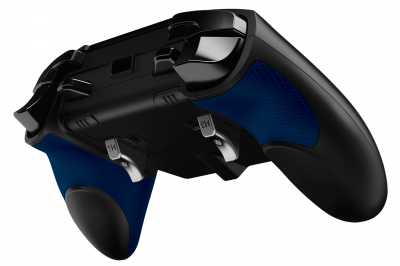
These problems are somewhat offset by some wonderful analog sticks and R2/L2 buttons. The analog sticks on the Raiju are a surprisingly great combination of responsive, springy and loose. That sounds like a weird combination of adjectives to describe an analog stick, but that’s the only way to truly describe the Raiju’s sticks. They require little force to move and are smooth throughout any movement you need, but also spring back instantly the second you let go of them. They feel wonderful, especially in games that require quick reactions. The L2/R2 buttons are incredible thanks to a great implementation of hairline triggers. There are a pair of sliding buttons next to them that allow you to freely swap between full trigger movements and hairline trigger movements. The ability to quickly swap between the two meant that I could effortlessly change to full triggers when playing The Crew and hairline triggers to dodge while playing the Nier Automata demo.
Overall, the Razer Raiju is not quite as definitive a controller as I would have hoped considering the $229.95 RRP. The face buttons, shoulders buttons and analog sticks feel great, but the d-pad is terrible and the customisable buttons are in frustration positions. The controller feels extremely comfortable when meld in the hand, but the other issues prevent that from being enough to justify the purchase. Overall, unless you absolutely cannot stand using displaced analog sticks, it’s hard to justify spending the extra $50 to pick up the Razer Raiju over the Nacon Revolution Pro.
- Amazingly clicky face buttons
- Textured grips are incredibly comfortable
- Analog sticks are highly responsive
- D-pad is made of separate buttons and feel unresponsive
- Placement of customisable buttons are frustrating
- All buttons feel different to each other, making controller feel disjointed

